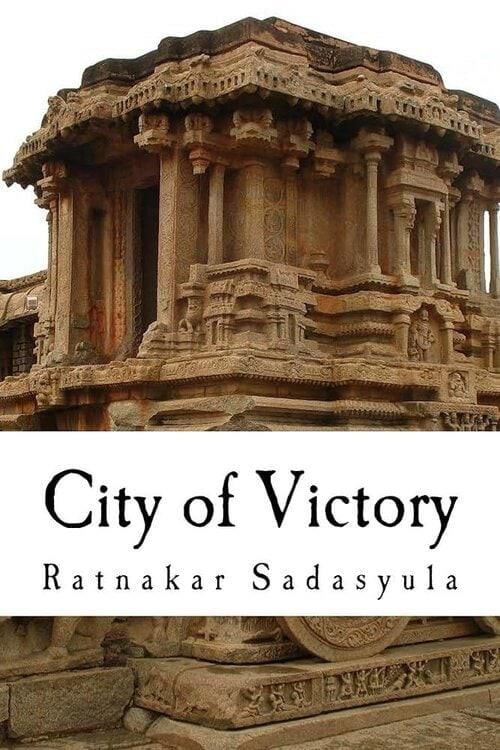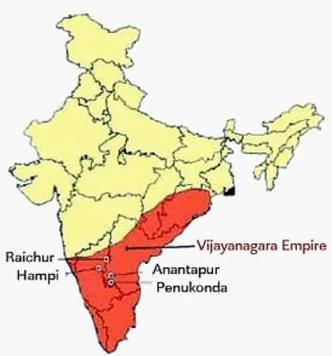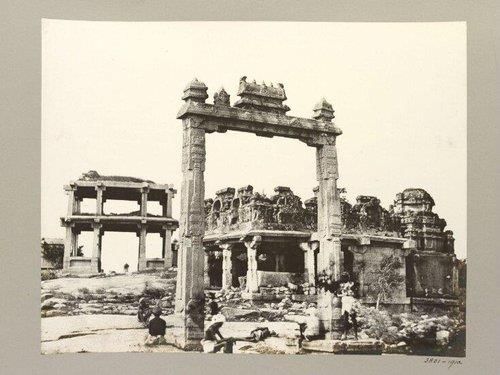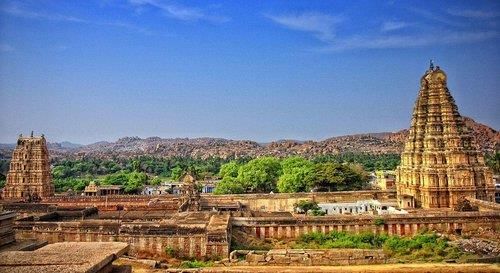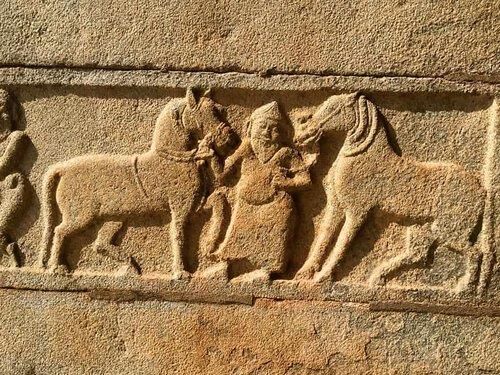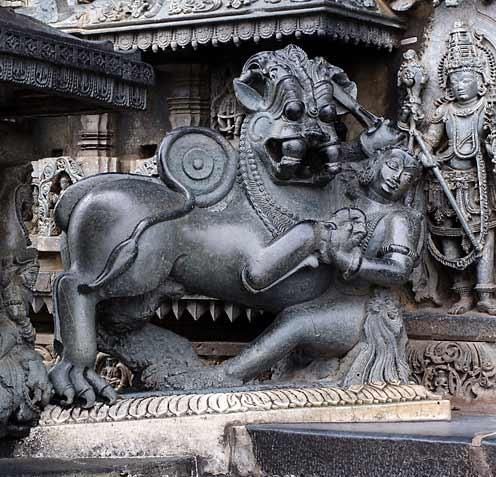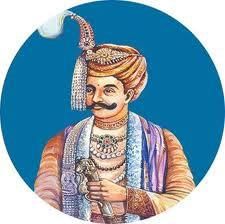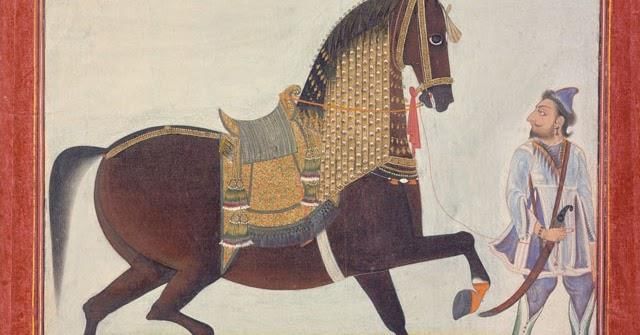|
Vijayanagara was established in the ___ century and was known as the "city of victory." |
Card: 1 / 48 |
|
The empire of Vijayanagara reached its peak from the river Krishna in the north to the ___ in the south. |
Card: 3 / 48 |
|
True or False: The name Hampi is derived from the local mother goddess Pampadevi. |
Card: 9 / 48 |
|
What type of historical sources did historians use to reconstruct the history of Vijayanagara? |
Card: 11 / 48 |
|
Inscriptions, accounts of foreign travelers, and literature in Telugu, Kannada, Tamil, and Sanskrit |
Card: 12 / 48 |
|
Fill in the blank: Photographers began recording the monuments at Hampi in ___. |
Card: 13 / 48 |
|
Multiple Choice: Who prepared the first survey map of Hampi? A) Alexander the Great B) Colonel Colin Mackenzie C) Marco Polo D) Ibn Battuta |
Card: 15 / 48 |
|
Fill in the blank: Historians began collecting inscriptions found at Hampi as early as ___. |
Card: 17 / 48 |
|
The Vijayanagara Empire was founded in ___ by two brothers named Harihara and Bukka. |
Card: 19 / 48 |
|
What was a significant factor contributing to the military strength of the Vijayanagara Empire? |
Card: 21 / 48 |
|
True or False: The Portuguese had superior military technology, particularly muskets, which made them less significant in the politics of the period. |
Card: 23 / 48 |
|
False. The Portuguese had superior military technology, particularly muskets, which made them significant players in the politics of the period. |
Card: 24 / 48 |
 Unlock all Flashcards with EduRev Infinity Plan Starting from @ ₹99 only
|
|
The rulers of Vijayanagara, known as rayas, built upon the traditions of previous powerful states such as the ___ and the ___. |
Card: 25 / 48 |
|
Who was the ruler of the Vijayanagara Empire known for expansion and consolidation? |
Card: 27 / 48 |
|
The amara-nayaka system in the Vijayanagara Empire was influenced by the ___ system of the Delhi Sultanate. |
Card: 29 / 48 |
|
Fill in the blank: The Vijayanagara Empire experienced its peak under the rule of Krishnadeva Raya, who reigned until ___ in 1529. |
Card: 31 / 48 |
|
Multiple Choice: What was a major trade good for the markets in Vijayanagara? A) Horses B) Spices C) Silk D) All of the above |
Card: 33 / 48 |
|
True or False: The Nayakas were military chiefs who had absolute power without any obligations to the king. |
Card: 35 / 48 |
|
False. The Nayakas were military chiefs who collected taxes and showed loyalty to the king by sending tribute. |
Card: 36 / 48 |
|
Vijayanagara is located in a natural basin formed by the river Tungabhadra, which flows in a north-easterly direction. |
Card: 38 / 48 |
|
The Kamalapuram tank, built in the early fifteenth century, was the most important reservoir providing irrigation for nearby fields and the royal center. 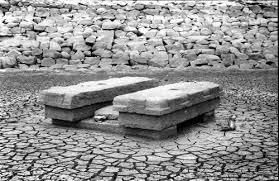 |
Card: 40 / 48 |
|
True or False: The fortifications of Vijayanagara included only one line of walls. |
Card: 41 / 48 |
|
False. The city was enclosed by seven lines of fortifications, including walls and bastions.  |
Card: 42 / 48 |
|
Fill in the blank: The Hiriya canal was built by the kings of the ___ dynasty to channel water from a dam across the Tungabhadra. |
Card: 43 / 48 |
|
What architectural style influenced the gateways of Vijayanagara's fortifications? |
Card: 45 / 48 |
|
The gateways had arches and domes influenced by the Indo-Islamic style from the Turkish Sultans. |
Card: 46 / 48 |
|
The Mahanavami Dibba is a massive platform that likely supported a wooden structure and was used during rituals associated with the Hindu festival of Mahanavami, demonstrating the power and prestige of the Vijayanagara kings. |
Card: 48 / 48 |





